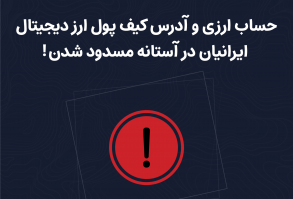Health-focused conversational agents in person-centered care: a review of apps npj Digital Medicine

The integration of predictive analytics can enhance bots’ capabilities to anticipate potential health issues based on historical data and patterns. Once again, answering these and many other questions concerning the backend of your software requires a certain level of expertise. Make sure you have access to professional healthcare chatbot development services and related IT outsourcing experts. Medical chatbots provide necessary information and remind patients to take medication on time. Medisafe empowers users to manage their drug journey — from intricate dosing schedules to monitoring multiple measurements. Additionally, it alerts them if there’s a potential unhealthy interaction between two medications.
Most of the 78 apps reviewed focus on primary care and mental health, only 6 (7.59%) had a theoretical underpinning, and 10 (12.35%) complied with health information privacy regulations. Our assessment indicated that only a few apps use machine learning and natural language processing approaches, despite such marketing claims. Most apps allowed for a finite-state input, where the dialogue is led by the system and follows a predetermined algorithm. Healthbots are potentially transformative in centering care around the user; however, they are in a nascent state of development and require further research on development, automation and adoption for a population-level health impact. Many health professionals and experts have emphasised that chatbots are not sufficiently mature to be able to technically diagnose patient conditions or replace health professional assessments (Palanica et al. 2019).
[Webinar] Patient Satisfaction, Operational Efficiency, and the ROI Jackpot: Can You Have It All?
For example, in the field of psychology, the so-called framework of ‘script theory’ was ‘used to explain how a physician’s medical diagnostic knowledge is structured for diagnostic problem solving’ (Fischer and Lam 2016, p. 24). According to this theory, ‘the medical expert has an integrated network of prior knowledge that leads to an expected outcome’ (p. 24). As such models are formal (and have already been accepted and in use), it is relatively easy to turn them into algorithmic form. The rationality in the case of models and algorithms is instrumental, and one can say that an algorithm is ‘the conceptual embodiment of instrumental rationality within’ (Goffey 2008, p. 19) machines. Thus, algorithms are an actualisation of reason in the digital domain (e.g. Finn 2017; Golumbia 2009). However, it is worth noting that formal models, such as game-theoretical models, do not completely describe reality or the phenomenon in question and its processes; they grasp only a slice of the phenomenon.
As computerised chatbots are characterised by a lack of human presence, which is the reverse of traditional face-to-face interactions with HCPs, they may increase distrust in healthcare services. HCPs and patients lack trust in the ability of chatbots, which may lead to concerns about their clinical care risks, accountability and an increase in the clinical workload rather than a reduction. When physicians observe a patient presenting with specific signs and symptoms, they assess the subjective probability of the diagnosis. Such probabilities have been called diagnostic probabilities (Wulff et al. 1986), a form of epistemic probability.
Use cases of healthcare chatbots
Many customers prefer making appointments online over calling a clinic or hospital directly. A chatbot could now fill this role by offering online scheduling to any patient through its website or app. Chatbots can healthcare chatbot use cases help doctors communicate with patients more conveniently than ever before. They can also aid in customer or patient education and provide data about treatments, medications, and other aspects of healthcare.
A chatbot can monitor available slots and manage patient meetings with doctors and nurses with a click. As for healthcare chatbot examples, Kyruus assists users in scheduling appointments with medical professionals. This type of chatbot app provides users with advice and information support, taking the form of pop-ups. Informative chatbots offer the least intrusive approach, gently easing the patient into the system of medical knowledge. That’s why they’re often the chatbot of choice for mental health support or addiction rehabilitation services.
Providing basic mental healthcare
It means a good AI chatbot can process conversations faster and better than human agents and deliver an excellent customer experience. Chatbots can leverage recommendation systems which leverage machine learning to predict which insurance policies the customer is more likely to buy. Based on the collected data and insights about the customer, the chatbot can create cross-selling opportunities through the conversation and offer customer’s relevant solutions. Salesforce is the CRM market leader and Salesforce Contact Genie enables multi-channel live chat supported by AI-driven assistants. In a market where policies, coverage, and pricing are increasingly similar, AI chatbots give insurers a tool to offer great customer experience (CX) and differentiate themselves from their competitors.
- The use of chatbots in health care presents a novel set of moral and ethical challenges that must be addressed for the public to fully embrace this technology.
- Consequently, promoting a healthy lifestyle early on is imperative to maintain quality of life, reduce mortality, and decrease the risk of secondary cancers [87].
- The advent of such technology has created a novel way to improve person-centered healthcare.
- For instance, ecosystem stakeholders’ traditionally slow approach to adopting new technologies restricts access to training data, making it difficult to get the NLP and ML-driven systems up and running.
- When chatbots are developed by private healthcare companies, they usually follow the market logic, such as profit maximisation, or at the very least, this dimension is dominant.
- A comparison of symptom-checker tools indicated great variability in effectiveness in terms of their sensitivity and specificity,37 with some outperforming the CDC symptom-checker.
In today’s digital era, chatbots have significantly impacted the banking industry, offering a myriad of innovative and convenient use cases that optimize operational efficiency. These AI-powered virtual assistants have become valuable assets, streamlining various aspects of banking services and improving interactions between customers and financial institutions. We will explore a diverse range of chatbot use cases in banking, demonstrating how these intelligent tools redefine customer service, foster financial literacy, and transform the way customers manage their finances. In simple terms, conversational AI is a category of AI-driven solutions that automate human-like conversations with users. It utilizes techniques like natural language processing and machine learning to tap into their learnings and deliver clear answers to varied questions in a conversational tone. Currently, and for the foreseeable future, these chatbots are meant to assist healthcare providers – not replace them altogether.
Thus, as a formal model that was already in use, it was relatively easy to turn it into algorithmic form. These expert systems were part of the automated decision-making (ADM) process, that is, a process completely devoid of human involvement, which makes final decisions on the basis of the data it receives (European Commission 2018, p. 20). Conversely, health consultation chatbots are partially automated proactive decision-making agents that guide the actions of healthcare personnel. Most would assume that survivors of cancer would be more inclined to practice health protection behaviors with extra guidance from health professionals; however, the results have been surprising. Smoking accounts for at least 30% of all cancer deaths; however, up to 50% of survivors continue to smoke [88]. The cognitive behavioral therapy–based chatbot SMAG, supporting users over the Facebook social network, resulted in a 10% higher cessation rate compared with control groups [50].

No matter how much you try to use a bot, it won’t satisfy your needs if you pick the wrong provider. Even if you do choose the right bot software, will you be able to get the most out of it? This transforms the banking experience for the clients and most of them want to have the possibility to use digital channels to interact with the bank.



